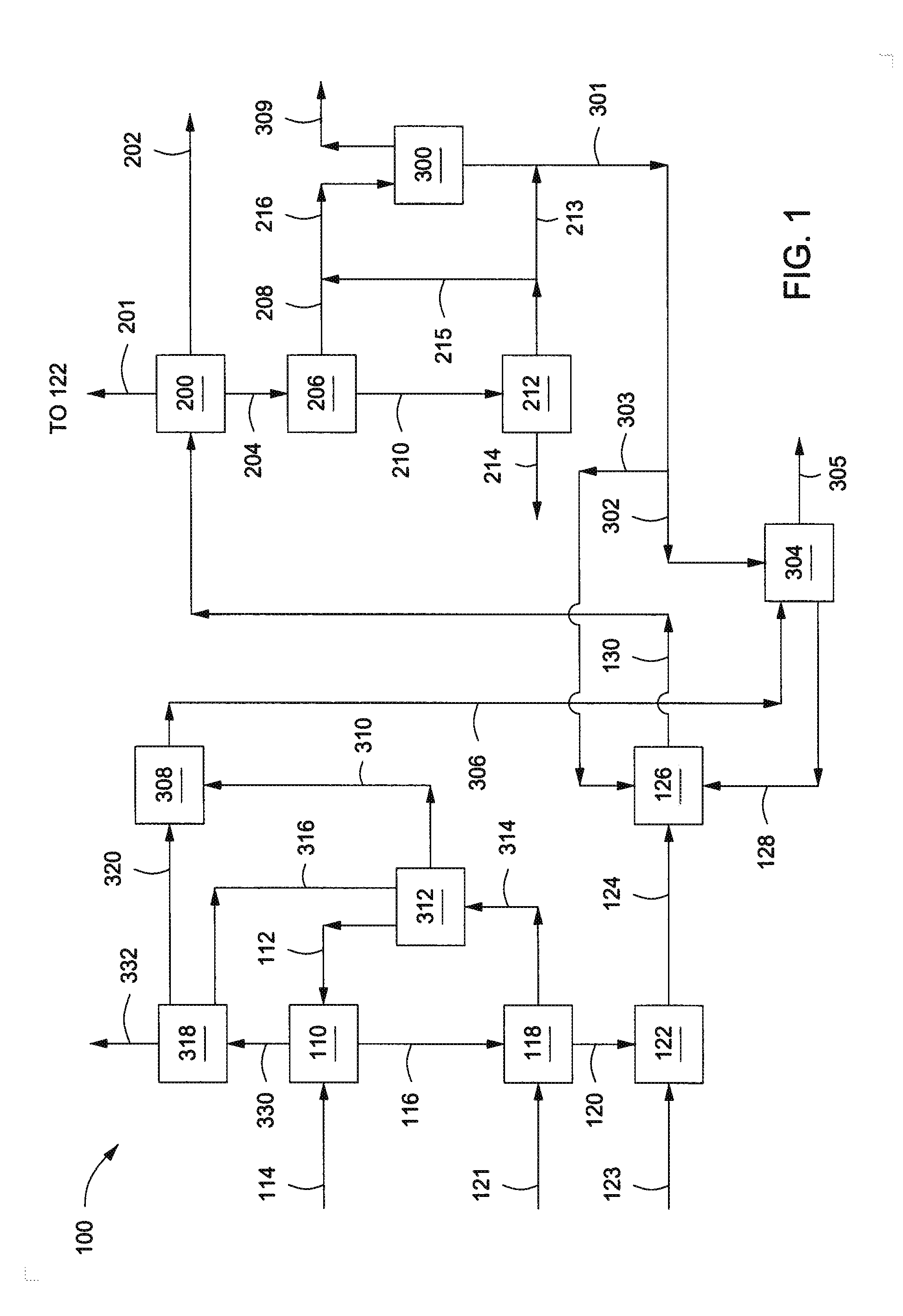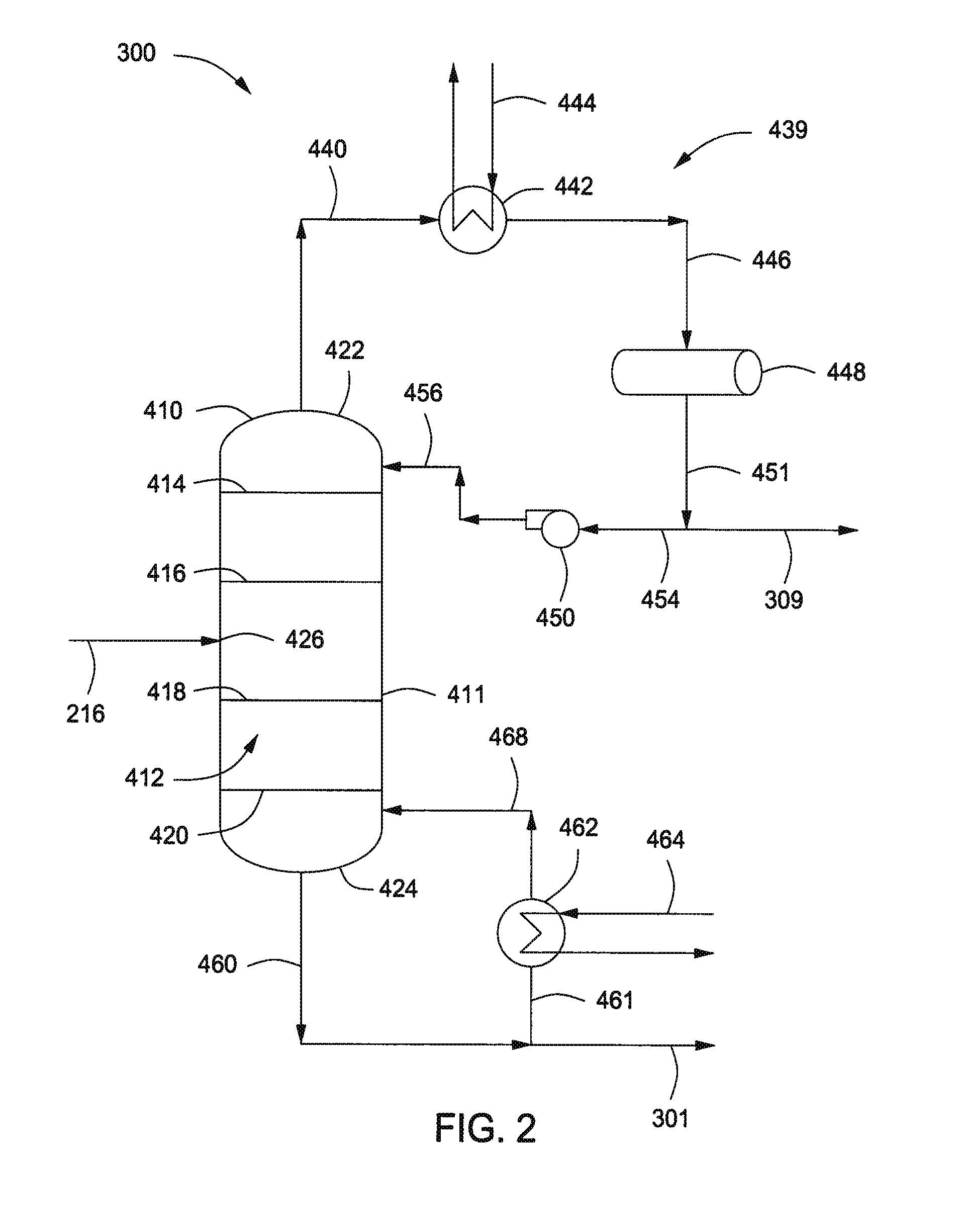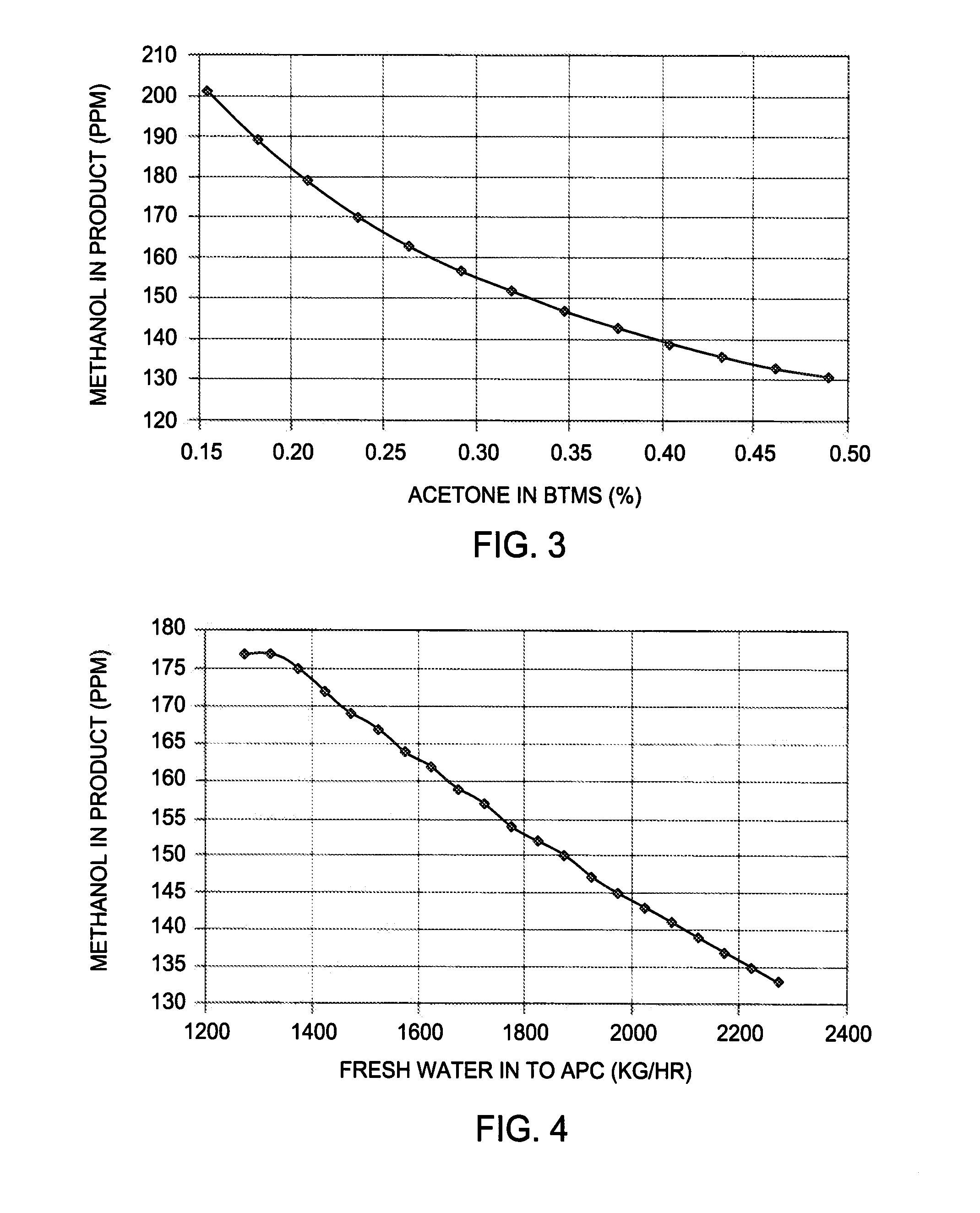Methods and systems for co-producing a low-methanol content acetone
- Summary
- Abstract
- Description
- Claims
- Application Information
AI Technical Summary
Benefits of technology
Problems solved by technology
Method used
Image
Examples
Embodiment Construction
[0012]Methods and systems for producing low methanol concentration acetone are provided. The method can include oxidizing and cleaving cumene to produce a crude acetone product. The crude acetone product can be neutralized in a neutralization unit to produce a neutralized crude acetone product. The neutralized crude acetone product can be fractionated in an acetone fractionation column to produce an acetone product and an acetone bottoms product. Methanol can be removed from the acetone bottoms product to produce a methanol-depleted product. The methanol-depleted product can be introduced to the neutralization unit, a dephenolation unit, or both.
[0013]FIG. 1 depicts an illustrative system 100 for producing acetone, according to one or more embodiments. The system 100 can include one or more oxidation units 110 configured to receive cumene via line 112 and an oxidant via line 114 and to produce an oxidized product via line 116. The oxidation unit 110 can be any system or device suita...
PUM
| Property | Measurement | Unit |
|---|---|---|
| Fraction | aaaaa | aaaaa |
| Fraction | aaaaa | aaaaa |
| Concentration | aaaaa | aaaaa |
Abstract
Description
Claims
Application Information
 Login to View More
Login to View More - R&D
- Intellectual Property
- Life Sciences
- Materials
- Tech Scout
- Unparalleled Data Quality
- Higher Quality Content
- 60% Fewer Hallucinations
Browse by: Latest US Patents, China's latest patents, Technical Efficacy Thesaurus, Application Domain, Technology Topic, Popular Technical Reports.
© 2025 PatSnap. All rights reserved.Legal|Privacy policy|Modern Slavery Act Transparency Statement|Sitemap|About US| Contact US: help@patsnap.com



